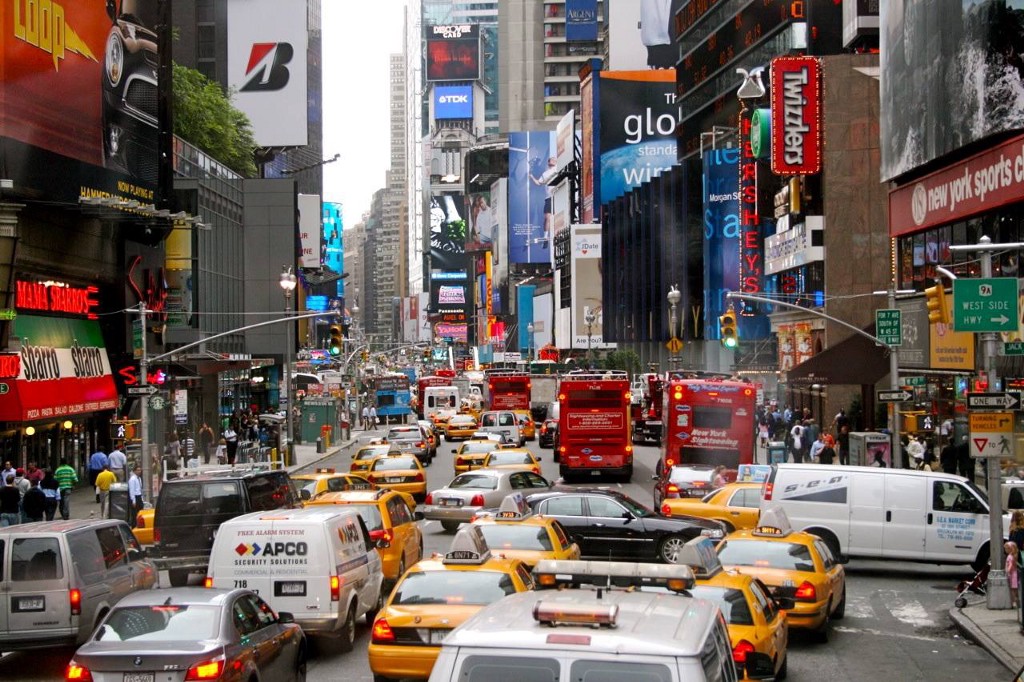Urban areas mid-century will be full of traffic, and more than $1 trillion in opportunities for smart-transportation investments.
With an estimated 2.5 billion more people in urban areas, demand for urban mobility will be 95 percent higher than it was in 2015. Global road freight is expected to more than double, especially in China and India.
Transport already contributes about one-quarter of all energy-related carbon emission. Business-as-usual would mean transport-related CO2 emissions could more than double to 16–18 gigatons by 2050.
New thinking around urban design, infrastructure investment, energy-efficiency technology, and business models are needed to avoid disaster, according to Creating Markets for Climate Business from the International Finance Corp.
In the next decade, the report says, total investment in road, rail, port, and airport infrastructure will total $8 trillion in the Asia-Pacific region alone, growing from $557 billion in 2014 to $900 billion by 2025. Electric vehicles, already a $163 billion market, are growing by 40% per year, and the price of lithium batteries continues to drop.
Volvo has set a goal of building only electric and hybrid vehicles within two years. Shared mobility and self-driving vehicles are also potentially disruptive investment markets, expected to reach $250 billion by 2050.
The report’s three-step approach to climate-smart urban transport: AVOID (reduce or avoid the need for travel); SHIFT (to more environmentally friendly modes); and IMPROVE (vehicle efficiency and technology).
To this end, the global transport sector announced at COP 23 that they were launching a newTransport Decarbonisation Alliance (TDA) to push for further, faster climate action and to stimulate greater political leadership.
The Paris Process on Mobility and Climate suggests investments in low-carbon transport infrastructure and services offer great value for money and can bring substantial economy-wide benefits and improve social equity.
Public-private partnerships can unlock commercial finance and expertise, especially for bus rapid transit systems (BRTs) and light rail systems.











